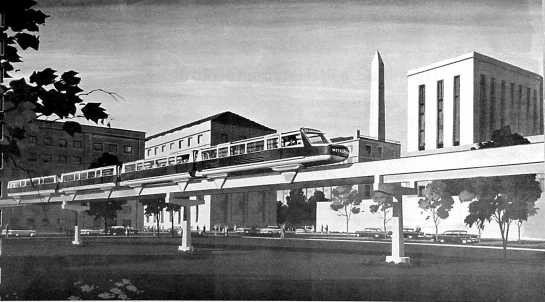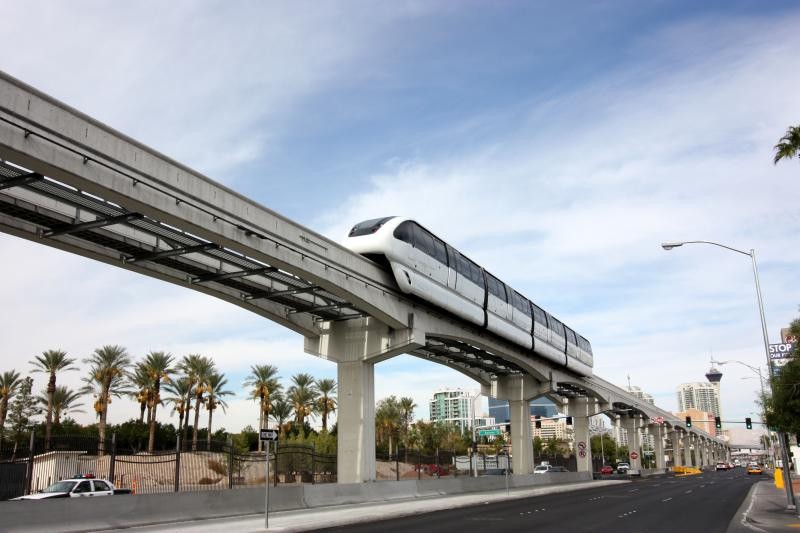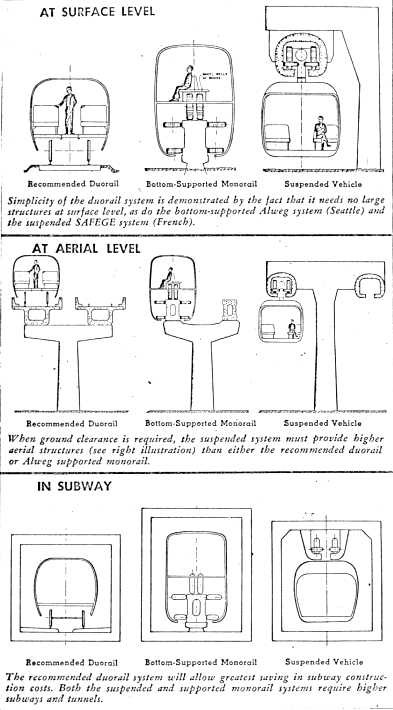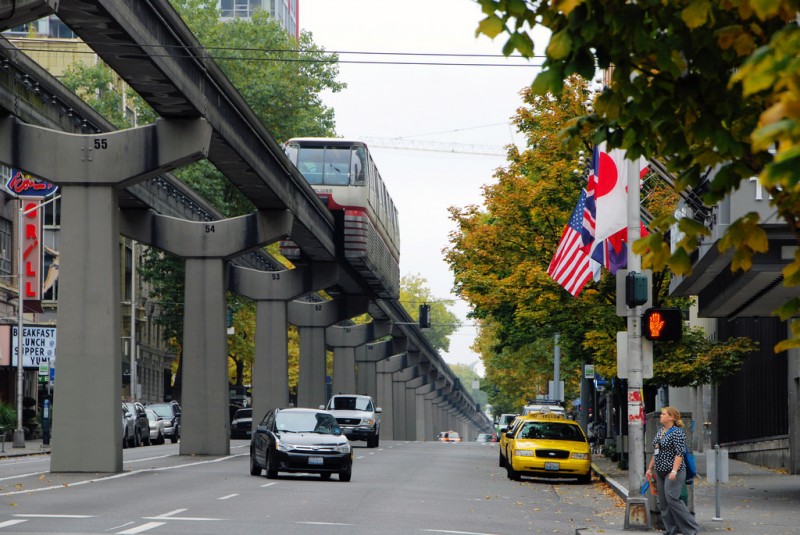Why cities rarely build monorails, explained

Monorail was proposed and discarded as a technology for Metrorail. Image by Monorail Presentation Charts, 1959, DC Public Library.
Monorails are cool! Wowee! Whiz-bang! So why don't cities build more of them? It turns out that compared to normal rail, monorails have some legitimate downsides that make them an impractical option for most (but not all) transit corridors.
First, a primer on why people like monorails
A lot of people simply like monorails because they look good. A Jetsons-esque elevated bullet train zipping above traffic tickles peoples' sense of wonder in a way that dingy subways often don't, WMATA's famous vaults perhaps notwithstanding. For the non-transit-nerds among us, that can be enough.
More objectively, monorail tracks are a little lighter and narrower than standard rail tracks, meaning overhead monorail structures can sometimes be a little less expensive and imposing than overhead Metros, and much less imposing than the pre-war els of Chicago, Philadelphia, and New York.
Beyond the shape of trains and tracks, most Americans' experiences with monorails come from tourist encounters in Disney or Las Vegas, where the polish of privately-owned-and-operated trains ridden strictly during vacation inevitably beats the experience of day-to-day commuting in public. Actual public transit monorails don't have that same happiest-place-on-Earth shine.
Las Vegas monorail by Michael Dorausch licensed under Creative Commons.
Those advantages aren't irrational. It's just that they usually aren't enough to overcome monorails' three big disadvantages:
1. Monorails are all-el or bust
It's true that elevated monorails can be less expensive than elevated standard rails. Unfortunately, the track structure of monorails force elevated-like construction even for ground level or subway lines. This graphic shows how that works:
Image by Gilbert Gude Papers, Box 143, Folder: Transit, General Correspondence, 1969-1970 GWU.
Thus at ground level and in subways, monorails are more expensive than normal trains. And since ground level is always cheaper to build than elevated regardless of mode, every new transit line uses ground level as much as possible.
So while it's true that monorails may make sense for new lines that are close to 100% elevated, there simply aren't very many of those.
2. Switching monorail tracks is hard
In any large transit system, trains sometimes have to switch tracks. Two lines converge or branch apart, or a train uses a pocket track to turn around, or single-tracking forces trains to switch from side to side. Track crossovers are integral to train operations. If you look at a Metrorail track schematic, there are dozens of such crossovers.
But take a look at a monorail, and how the train itself wraps around the monorail track:
Seattle monorail by the author.
That wrap-around makes monorail track crossovers hard and expensive to build, and slow to operate. Watch this video to see how it works. You can see that while monorail crossovers aren't completely impossible, they're vastly less practical than for normal trains.
For short individual lines, that's not a big deal. But it's hard to scale up if you want far-reaching city-wide transit.
3. Transit agencies like maintenance simplicity
Even with those two big shortcomings, monorails can still be useful on individual lines that need to be fully elevated. And yet, we still don't see many built. This is because for big transit agencies with multiple lines, it's easier to maintain a fleet full of the same equipment than to keep parts and training current for a lot of different technologies simultaneously.
Obviously a lot of cities do have more than one type of train. Sometimes the same transit agency even runs multiple technologies. On its own this last point isn't enough to explain monorails' unpopularity. But combined with other problems, this further narrows the already small set of circumstances where monorails might be the best choice.
The bottom line
There is a narrow set of circumstances where monorails are the most sensible option. If the technical details align, that is when you have a mostly elevated line that doesn't need many switches, and there's not a strong incentive to match an agency's equipment, then the positives of monorails can outweigh the negatives.
That just doesn't happen very often, and for the remaining 99% of cases, monorails aren't worth the headache.
But if you're Wuppertal, Germany and you want to run a train line over a river where children play, go to town.
Wuppertal, Germany’s monorail by Eric Fidler licensed under Creative Commons.
